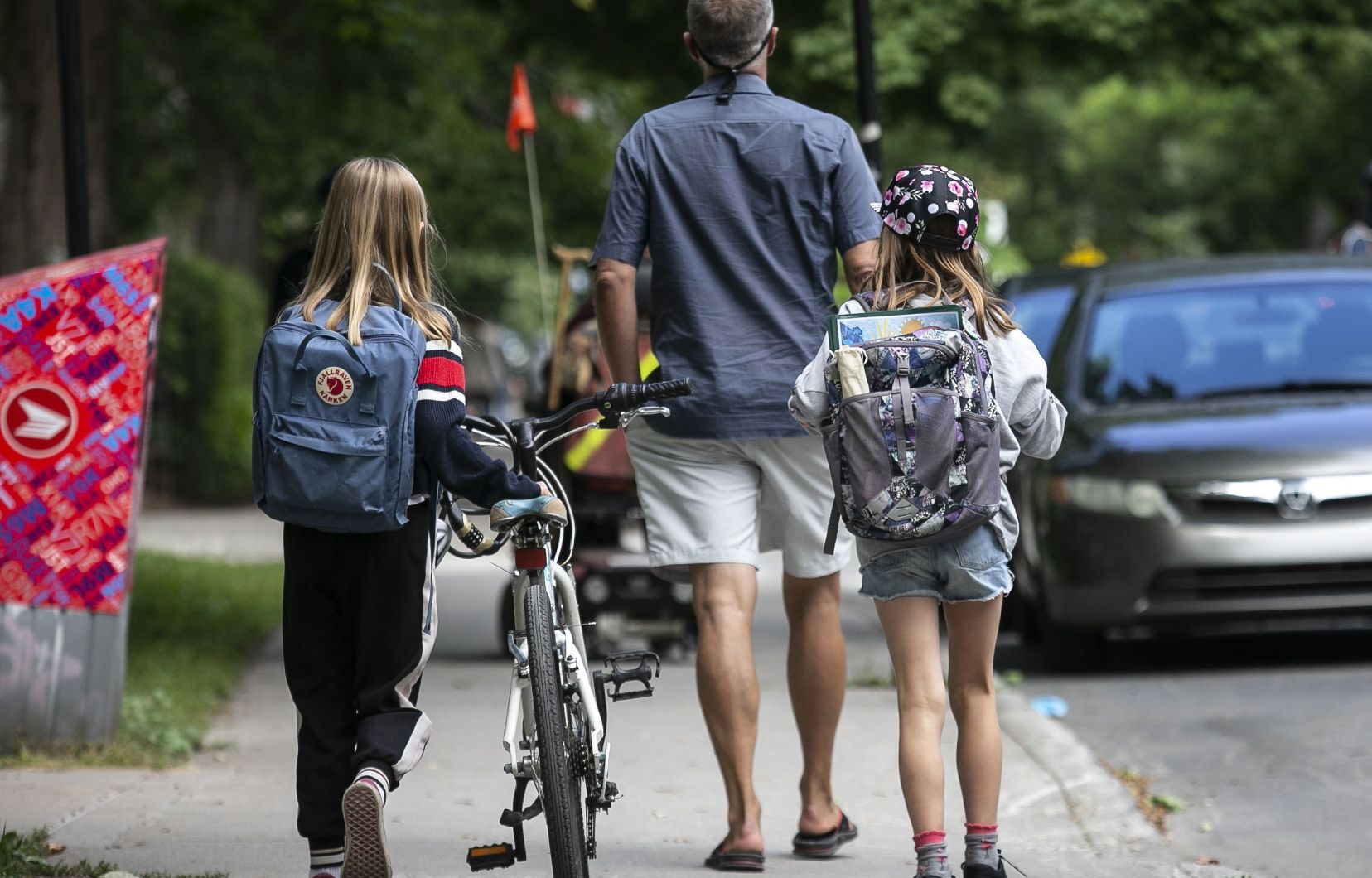Since the COVID-19 health crisis plunged Quebec (like the rest of the world) into a major lockdown, the start of the school year has been synonymous with worry and uncertainty. Despite the increase in the number of cases this summer, there is no need to worry too much, according to an expert.
However, we must continue to adopt good behavior, especially keeping a sick child at home.
It is inevitable that there will be cases of COVID-19 infection in classrooms since children are next to each other, explains Benoit Barbeau, professor in the Department of Biological Sciences at UQAM and an expert in virology. “Whether it is the COVID-19 virus or the flu virus, ideally, the parent should keep the child [malade] at home, to prevent him from going to school because in any case these are not the best conditions for learning,” he says.
Among other important measures, Mr. Barbeau mentions the ventilation of classrooms, an aspect that has been the subject of much discussion during the pandemic. “As much as possible, we maintain a certain air flow to ensure that the air circulates. We hope that schools are equipped with good ventilation units,” he mentions.
This summer, the number of positive COVID-19 cases has climbed relatively steadily and continues to increase. Quebec government data for the week of August 11 to 17 shows nearly 2,500 new cases, including 1,217 hospitalizations.
“It is certain that when the school year starts again, we will closely monitor this virus and the others, but this one particularly in relation to what we have experienced in recent years. We want to make sure that we have a good understanding of the situation, of the current picture, even before the school year starts,” says Mr. Barbeau.
“It is up to the provincial and federal governments to communicate good practices to the population and ensure that, despite this increase, we can maintain a certain control over the transmission of this virus,” adds the professor.
He specifies that currently it is the sub-variants KP.1, KP.2 and KP.3 which are very prevalent and more transmissible, which is causing these increases in cases of infection.
These sub-variants, like the older BA.1, BA.2, BA.4 and BA.5, are derived from the Omicron variant. “The benefit that we have gained from this sudden and very significant prevalence of Omicron is the derived idea that the symptoms are usually less severe than the preceding variant. Just before, we saw the Delta variant rising and starting to grow in terms of cases of infection, but it was much more significant in terms of symptoms,” explains Mr. Barbeau.
The current situation is not worrying
Although the subvariants that originated from Omicron are associated with less severe symptoms than those of the Delta variant, it is not excluded that they mutate into a more aggressive virus. “It is certain that we could eventually arrive at a [variant] a little more dangerous, associated with more serious symptoms,” warns Mr. Barbeau.
However, he believes that the sub-variants currently circulating in Quebec are “not too serious in terms of the risk of hospitalization cases.” He also points out that children generally have minor symptoms of COVID-19. Cases of hospitalization of children are few and far between, and deaths are quite rare.
The virology expert does not expect COVID-19 to have as much impact on the education system in the near future as it has during previous school years. “I believe that closing a class is really a last resort if the situation gets out of control and it is the only way to reduce transmission,” he says.
Mr. Barbeau believes that the worst is over since the Omicron wave that hit Quebec at the end of 2021 and the beginning of 2022. “It was the peak, an extraordinary amplitude in the rise in cases of infection. […] Suddenly, we caught up with those who weren’t [infectés]. It was a peak and I would be surprised if we experience the same thing in the next few years or even decades, but you never know.”
Other viruses
There are a range of respiratory viruses, including other coronaviruses, rhinoviruses and adenoviruses. These are all responsible for the common cold. Another thing to watch out for is respiratory syncytial virus (RSV), which is more dangerous for young children and the elderly.
But COVID-19 has a particularity: this virus circulates at all times, although more active in the fall and winter. The fact that it is transmitted all year round means that it adapts according to the population that is infected. “Throughout the multitude of variants that are produced, there is always one that finds the winning combination to be able to be more prevalent. This is what we have seen since the end of May when hospitalization cases have increased,” explains Mr. Barbeau.
Influenza, which emerges in the fall and lasts until the end of winter, can also cause a significant number of hospitalizations.
We never know how intense the influenza virus will be; some strains are more aggressive than others, depending on the year. “In recent years, we have had vaccines that have been very effective,” comments Mr. Barbeau.
Each year, the influenza vaccine is produced based on forecasts made by the World Health Organization, which attempts to predict which strains of influenza will be most dominant during the upcoming season.
For COVID-19 vaccination, the National Advisory Committee on Immunization (NACI) recommends that only vaccines containing the most recent selected strain should be used in fall 2024.
—
The health content of The Canadian Press obtains funding through a partnership with the Canadian Medical Association. The Canadian Press is solely responsible for editorial choices.
